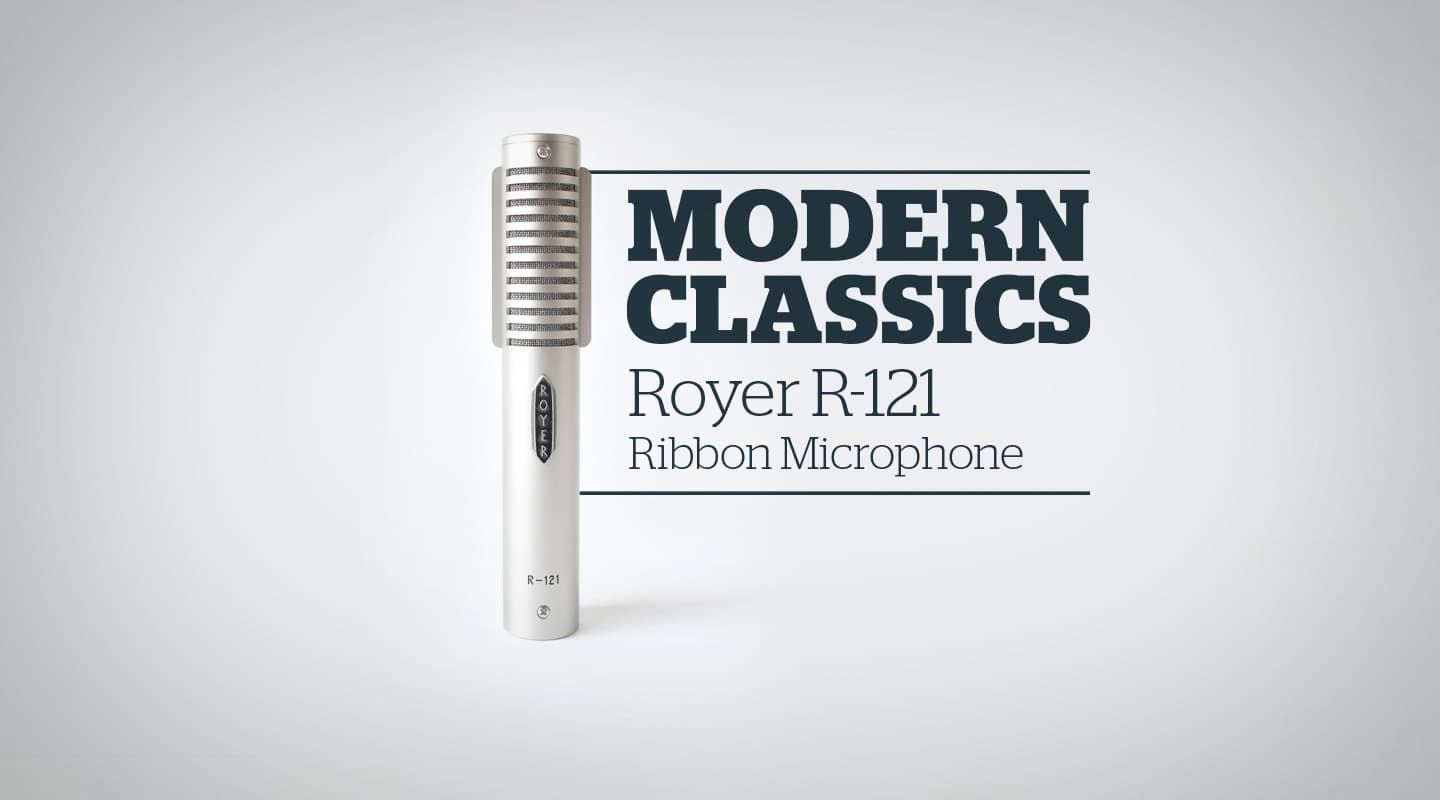
Modern Classics: Royer R-121 Ribbon Microphone
In 1998, building your business around ribbon mics was definitely a left-of-centre choice. But 15 years on, Royer Labs’ off-centre ribbon is a modern classic.
Mic Images: Corey Sleap
It’s an audience you never expect to end up fronting. You can hope, dream, even. But giving an acceptance speech to your peers at The Grammys would have been unthinkable for David Royer and John Jennings in 1997. Back then, they were owners of a one-year-old boutique audio company, DVA, that was barely showing signs of life, and their great hope for the future was a piece of technology everyone considered old hat — a ribbon mic.
It was dire straits for the pair, and naturally, doubt had crept in for Jennings. Royer was the genius, slightly autistic, inventor of the two, Jennings played more of an advocate role. And while Royer had become convinced ribbons were the perfect foil for the harsher realities of digital recording, Jennings wasn’t so sure it was a safe bet.
Royer kept complaining that nobody ever liked or wanted to know anything about ribbons mics. His pitch to Jennings remained constant, “Look, ribbons have a really great signature, and they’re the most natural of all the microphone types. Everybody’s talking natural, but nobody is really making a natural-sounding mic.” But he was right, no one wanted to hear it. The overriding sentiment was that ribbons went out eons ago. Old technology for a bygone era.
UP CONVERTING
Eventually, it took a ‘road to Damascus’-type epiphany to turn Jennings onto the benefits of ribbon mics. One day, Jennings was reading a magazine article about Eddie Kramer’s technique for recording Jimi Hendrix’s guitar. “He said he always had a ribbon on Hendrix’s cabinet in the studio,” recalled Jennings. “He had combinations of mics but they were always ribbons. That same day, on the way home, a Hendrix song came on the radio, Third Stone From The Sun, which has a beautiful melody and thick sounding guitars and it hit me. I had a religious conversion right there.”
From that point, the pair started talking about ribbons in earnest. And the very first ribbon mic Dave developed, the R-121, has since become a modern classic. In 2014, Royer Labs not only celebrated its 15th anniversary, but was awarded a 2013 Technical Grammy for its contribution to the recording industry, for designing a piece of gear that perfectly complemented the modern digital method. Some 15 years after the R-121’s invention, Royer’s instinct has held true.
“At the time [in 1998],” said Jennings, “digital recording was really taking off and crispy microphones used to sound somewhat tamed by tape machines. Take tape out and put converters into the chain, and suddenly the distortion artefacts and crispy highs, typically dulled a little by the recording medium, were sat right in front of your face. You were hearing a harshness from microphones that was uncomfortable, whereas ribbons recorded to digital systems beautifully. When we started Royer Labs a lot of engineers said they felt like they were working in an analogue world again.”

BUILDING UP ROYER
Developing a microphone that wasn’t just an evergreen idea, but would also have a long lifespan, didn’t come easy. DVA was a lesson in what not to do, with production problems grinding the business to a standstill. Jennings and Royer were both converted, but they knew they needed to secure a bit of help to rectify past issues. In stepped Rick Perrotta. He not only had a long history in the recording business (he owned Golden Sound Studios), but co-founded Matchless guitar amplifiers, renowned for kicking off the boutique amplifier boom with its peerless attention to detail. Perrotta was not only the co-founder, but also the production chief of Matchless. He was the perfect person to help Jennings and Royer develop Royer Labs’ production process and quash any reliability niggles. Perrotta was duly named President and the team moved from Royer’s garage in Fullerton, California, to a large building behind Perrotta’s garage, which became the Royer Labs base for the next six years.
Rounding out the founding four is Rafael Villafane, a chart-topping musician and producer, and partner with Perrotta in Baby’O Recorders (a hit studio in the ’80s). But more than that, Villafane also founded a number of live venues, where he performs regularly, along with the likes of Slash, Radiohead, and plenty more. He’s Royer Lab’s live guru.
LEFT OF CENTRE
The R-121’s most distinguishing characteristic, and how it became not just a vintage reissue but a modern workhorse, is its patented offset ribbon (Patent #6,434,252) — that is, it’s not dead-centre between the magnets. It’s the main reason the R-121 can handle high SPLs, unlike a lot of previous ribbon designs. It also had an unanticipated, yet welcome, side effect. The R-121 now had two sonic signatures at close range.
Jennings explains the principle behind it: “If you drive a ribbon fairly hard you can literally start to move it a little outside the prime magnetic field, which is where the greater concentration of magnetic energy is. So by having the ribbon towards the front of the transducer, you can drive it with high SPLs like electric guitars and get some pretty major excursions without pushing it outside of that prime magnetic field. And it also gives it a little bit more room to move inside the transducer.
“The other thing that really helps the mics is the way we corrugate the ribbons. Typically, when you corrugate ribbons to give them flexibility, you generally run them between a pair of gears with glassing paper on each side. The glassing paper protects the ribbon from the gears and keeps it from getting shredded because it’s so thin. Because of that extra padding they take on a sort of wavy appearance.
“Except in our case we run them through very expensive, hyper-precise corrugators — about six-grand apiece, with each gear costing a couple of grand. They’re so precise you can put the ribbons through the gears without glassing paper. That way they take the shape of the gears and a really hard corrugation. The gears are kept under lights to maintain a precise temperature when the ribbons go through so you can run a hundred ribbons through and they’ll all turn out perfect. We have a patent on the direct corrugation too, and the method of corrugating actually toughens up the ribbon a little bit more.”
DOUBLE-SIDED HAPPINESS
Mark Davie: Was the offset ribbon a happy accident, or carefully designed?
John Jennings: It was a bit of both. It was a nice way to produce but also a design idea. The happy accident part was not the offset ribbon so much, but the effect it ended up having on the backside of the mic.
We put the 121 in the anechoic chamber and got the specs for the microphone. But all those specs were based on the microphone’s front side. About a year after we opened the company, a friend of mine called me and said, ‘Hey, I just did some recording with this thing and the backside is brighter than the front. It’s actually better on vocals and acoustic guitars!’ I thought he was nuts.
So I went down to his studio to listen to some recordings and the back side was definitely brighter. Not so much if you got more than three feet away from the mic, but if the sound source was closer it was brighter.
Because the ribbon sat off-centre inside the microphone, it changed the way it would hear things. It’s a better sounding side for acoustic instruments and vocals. You can’t hit that side very hard because it’s already at the edge of the prime magnetic field and it’s going to be driven into a stamping screen it’s fairly close to. But for vocals, acoustic instruments, drum overheads, it’s really nice with it facing backwards.
That part of it was a happy accident. We had no clue until a year in, we had to rewrite all the materials!
The first thing this no-name mic ever heard was this band’s guitars. The mic became the Royer R-121, and the band became Queens of the Stone Age.
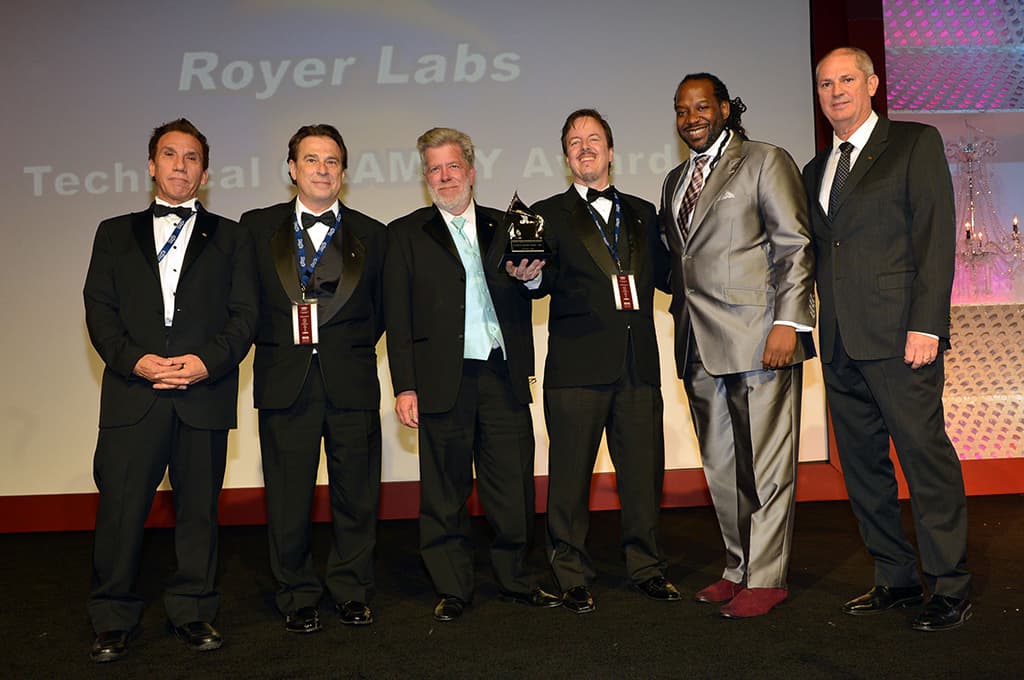

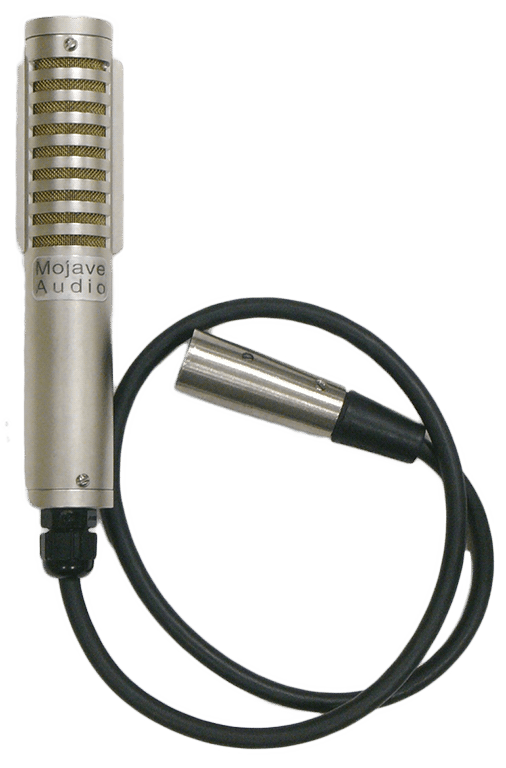
STICKING TO IT
MD: “Does Dave ever mess with the R-121 design, or is it as good as you can get?”
JJ: “We mess with it a little. The magnets in those microphones are neodymium. They’re very small, and very, very powerful. As the technology gets better we put stronger magnets in the microphones, which gives them more sensitivity, but they still sound exactly the same. And the magnets are the same shape which gives the mic the same look.
“We’re using the same transformer in that mic that we’ve used pretty much since the start. The first 200 mics had 200Ω transformers and after that we switched to 300Ω transformers. That’s many, many thousands of microphones now. The more recent mics are more sensitive because of the magnets, but otherwise it’s such a well-cooked cake we’re just not messing with it.
“We have made a couple of special edition models this year. Our 15th anniversary model had the black logo we used on the first couple of hundred mics, and it comes with a certificate signed by Dave Royer. We also won a Technical Grammy in February, which was platinum plated. So we released a platinum-plated Grammy edition with a signed certificate by Dave too. But those are just cosmetic changes to the microphone. Otherwise I don’t see any reason to change anything else.”
STRING OF HITS
While Royer has stopped short of messing with a good thing, the R-121 has spawned a number of spinoffs. Which, along with the Speiden-inspired SF range, round out Royer’s ribbon offerings. You can now get the phantom-powered R-122, which is 15dB hotter and “a little brighter because it has a faster transient response due to the active electronics,” said Jennings. The cut-price R-101 has the same transducer, ribbon element, and transformer in a different, less expensive body. Then there’s the valve version, and 121s and 122s tailored for live use.
They’re all designs based on the 121, but like the classic mics before it, Jennings doesn’t see the R-121 changing for another 15-20 years at least. It is what it is: a modern classic. A well-designed ribbon mic that balances with digital recording perfectly. And I doubt we’re going to see either of those going away any time soon.

Digidesign Digi 001
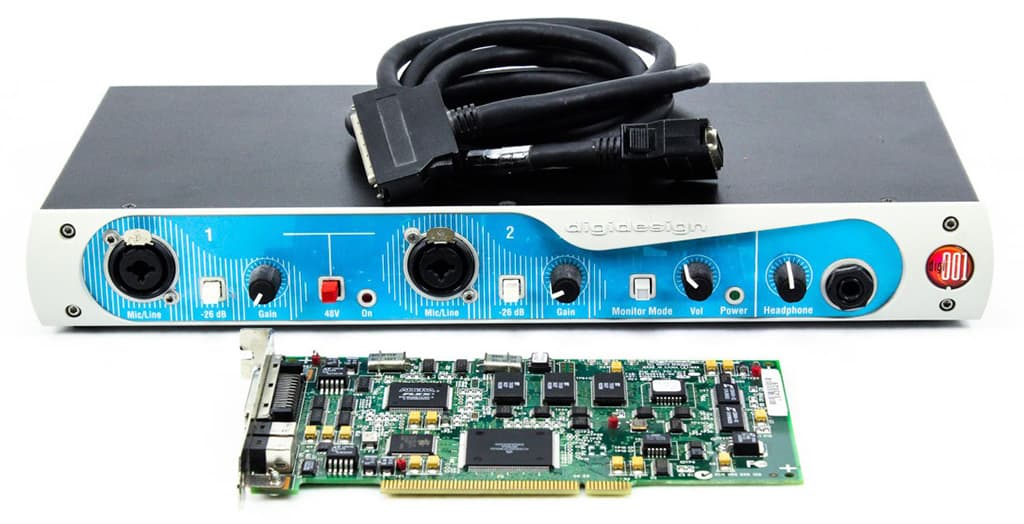
Released: 1999
Price: $1995
Digidesign (now Avid) released its 24-bit, host-based Digi 001 system at just the right time. The DAW market was about to go ballistic, host computers were becoming capable of handling the DSP dirty work and ProTools the aspirational software of choice. It wasn’t the first prosumer interface but it did have connections in high places. A network of professionals were already hooked on the ProTools drug, and their bona fides rubbed off on the 001, and home studios. The Digi 001 gave access to the same kind of toys as the big boys and girls of the recording world.
Priced at sub $2000, the system consisted of a PCI card capable of eight channels of digital I/O, an eight-channel breakout box with six analogue line inputs, plus two mic inputs and stereo S/PDIF. To encourage familiarity with the software, Digidesign gave away an early version of ProTools (v3.4) and the 001 itself came with a ‘lite’ version of the software entitled ProTools LE — it handled MIDI decently and shipped with a bunch of RTAS plug-ins to get you going.
There were some limitations: the LE software had a non-expandable maximum of 24 audio tracks (plus MIDI) and was limited to 48k sampling. The 001 I/O was intentionally hobbled, including a lack of wordclock.
None of this would have mattered to the home/project studio owners but if a project did expand beyond the capabilities of the 001 it could be transferred to a TDM system, plug-in settings intact, and continued. What’s more LE gave home studios a tantalising glimpse at what life might be like with a full-blown TDM system.
HOW IT CHANGED THE GAME: PROTOOLS FOR ALL
It’s hard to imagine a world without ProTools being utterly ubiquitous. But prior to the Digi 001, ’Tools was the preserve of the pro studio, much like an SSL or a U87. That all changed with the 001 and ProTools became a byword for digital recording. Remarkably the LE starting point was closer to the ‘real thing’ than most could have hoped for at the time — home studios were now using the same user interface as the pros. Unthinkable prior to the 001. And LE was remarkably powerful for the price.
What’s more, the 001 gave us a glimpse of a native studio future. DSP cards would persist — and, of course, they still do — but the 001 demonstrated that the PC would soon be the nerve centre of the studio rather than proprietary racks of processing.
As predicted by Daryl McKenzie in our original Issue 8 review, Digidesign created a new standard, describing it as a “must-try system”.

Apple iPod

Released: 2001
Price: $895
The Apple iPod was a game-changer that disrupted several industries at once. As a portable media player it replaced the much larger, Walkman-style analogue devices with its modern 5GB Toshiba hard-drive, sleek looks and innovative interface. As a piece of technology it helped establish Apple’s ongoing ability to show the way rather than following the pack. Combined with iTunes it shifted the emphasis from albums to songs and enabled listeners to conveniently build their own playlists. For artists it broke the mould of being slaves to the record companies…who became slaves to Apple.
Released in late 2001 with a 5GB drive and a sales pitch of “1000 songs in your pocket” it was initially Mac-only and quite expensive at A$895 for the original model. But the timing was right; the internet was awash with free/illegal MP3 versions of new and old songs and the record industry was just beginning to respond with legal action to protect its copyrighted products. The second-generation of iPods saw a Windows version of iTunes and sales took off. Consumers weren’t so much shamed into abandoning their illegal stashes of downloads as bewitched by the beauty and convenience of the iPod ecosphere.
Unfortunately, everything about the iPod was superior except the sound, which maintained the presiding heavily-compressed file format of the time.
Naysayers will point the bone at the iPod digging the grave of the album and reinforcing recorded music’s paltry worth. Meanwhile, fans of the iPod will point to Steve Jobs’ love of music and how the iPod at least put some value on music and filled a void that the hand-wringing record companies simply couldn’t fill at the time.
HOW IT CHANGED THE GAME: WHAT HASN’T IT CHANGED?
If the iPod was simply a technical marvel that put 1000 songs in your pocket, that would be enough to earn it entry into the pantheon of sound. But it was so much more. A whole generation has now been raised on the iPod — this is how music is consumed. And as those involved in the recording and distribution of music, it behoves us to understand the habits of those consuming the songs: iTunes wields enormous influence. Albums mean little to the current generation, where singles reign supreme. Record companies’ clout has been decimated. Independent artists no longer court the ‘majors’ and their subsidiaries. Big studios have all-but disappeared. Live music and big-time concert touring enjoy a renaissance. Project studios, with high quality in-the-box recording and mixing, produce much of the released music. The shape of the music, recording, and live sound industry can be seen through the prism of one device: the iPod.







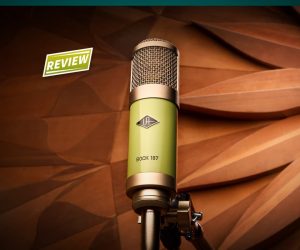









RESPONSES